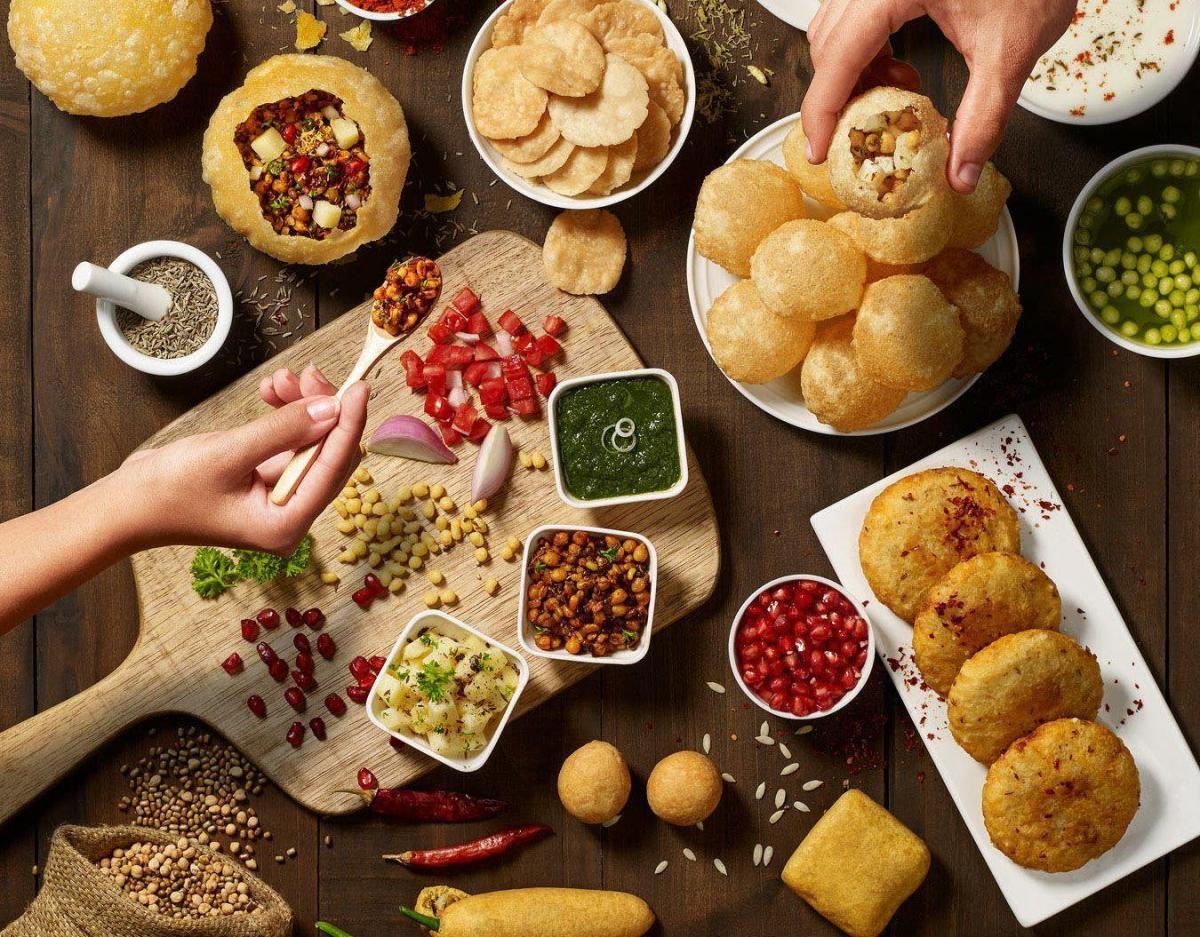Embark on a culinary adventure where vibrant street food flavors meet the mindful ethos of flexitarian eating. This exploration unveils a world of delicious and adaptable recipes, transforming beloved global street food classics into plant-forward feasts. Imagine the tantalizing aroma of jackfruit tacos echoing the spirit of traditional Mexican street fare, or the satisfying heartiness of lentil-based curries capturing the essence of exotic markets. We’ll delve into the cultural richness of each dish, showcasing how simple ingredient swaps can create satisfying meals that are both flavorful and sustainable.
We’ll guide you through creating vibrant, plant-based sauces that burst with flavor, offering nutritional benefits alongside culinary delight. Learn the art of sourcing ethical and sustainable ingredients, minimizing your environmental footprint while maximizing taste. From mastering simple cooking techniques to perfecting visually stunning presentations, this journey promises to elevate your culinary skills and expand your palate, all while embracing a more conscious approach to eating.
Step-by-Step Flexitarian Street Food Recipe
This recipe details the preparation of vibrant and flavorful Jackfruit Tacos, a delicious and satisfying flexitarian option inspired by classic street food. The jackfruit provides a hearty, meaty texture, making it a perfect substitute for traditional fillings. This recipe is easily adaptable to various dietary needs and preferences.
Ingredients
This section lists the ingredients required for the Jackfruit Tacos, categorized for clarity. Accurate measurements ensure consistent results.
- For the Jackfruit Filling: 1 (20-ounce) can young green jackfruit in water or brine, drained and rinsed; 1 large onion, finely chopped; 2 cloves garlic, minced; 1 red bell pepper, diced; 1 (15-ounce) can black beans, rinsed and drained; 1 cup vegetable broth; 2 tablespoons chili powder; 1 tablespoon cumin; 1 teaspoon smoked paprika; ½ teaspoon cayenne pepper (optional); Salt and pepper to taste; 2 tablespoons olive oil.
- For the Tacos: 12 corn or gluten-free tortillas; Toppings of your choice (see suggestions below).
Preparing the Jackfruit Filling
This section provides a step-by-step guide to preparing the flavorful jackfruit filling, including detailed instructions and visual descriptions of each stage.
- Image 1: Chopped Vegetables. A vibrant image showcasing finely chopped onions, minced garlic, and diced red bell pepper in a mixing bowl. The onions are translucent white, the garlic is pale ivory, and the bell pepper displays a rich, deep red hue. The ingredients are neatly arranged, ready for the next step.
- Sautéing Aromatics: Heat olive oil in a large skillet over medium heat. Add the chopped onion and sauté until softened and translucent, approximately 5 minutes. Add the minced garlic and diced bell pepper and continue to sauté for another 3-5 minutes, until slightly tender.
- Image 2: Sautéed Vegetables. A close-up shot reveals the softened onions, garlic, and bell peppers glistening with olive oil. The onions have turned a light golden color, and the peppers maintain their vibrant red, but with slightly softened edges, indicating they’ve been cooked. The mixture exudes a warm, inviting aroma.
- Adding Jackfruit and Spices: Add the drained and rinsed jackfruit to the skillet. Break it apart with a spoon or spatula into smaller, manageable pieces. Stir in the chili powder, cumin, smoked paprika, and cayenne pepper (if using). Cook for 5 minutes, allowing the spices to toast slightly and infuse the jackfruit.
- Simmering the Filling: Pour in the vegetable broth and bring to a simmer. Reduce heat to low, cover, and cook for 15-20 minutes, or until the jackfruit is tender and the liquid has reduced slightly. Season with salt and pepper to taste. Stir in the black beans during the last 5 minutes of simmering.
- Image 3: Finished Jackfruit Filling. A full shot displays the completed jackfruit filling in the skillet. The jackfruit is tender and slightly browned, the sauce is rich and dark brown, and the black beans are evenly distributed. The overall appearance is hearty and appetizing.
Assembling the Tacos
This section explains how to assemble the tacos, highlighting the importance of selecting fresh, high-quality tortillas and incorporating desired toppings.
Warm the tortillas according to package instructions. Fill each tortilla with a generous portion of the jackfruit filling. Add your choice of toppings.
Topping Suggestions
This section provides a list of topping suggestions to enhance the flavor and visual appeal of the tacos.
- Fresh cilantro: Adds a vibrant green color and fresh, herbaceous flavor.
- Diced avocado: Provides a creamy texture and healthy fats.
- Shredded lettuce: Adds crunch and a refreshing element.
- Pico de gallo: A mix of chopped tomatoes, onions, cilantro, and lime juice for a zesty kick.
- Lime wedges: Adds a burst of citrusy acidity.
- Vegan sour cream or cashew cream: Offers a creamy, tangy topping.
Alternative Ingredient Suggestions
This section provides alternative ingredients for those with dietary restrictions or preferences.
For those avoiding beans, lentils or mushrooms can be substituted for the black beans. For a spicier taco, increase the amount of cayenne pepper. For a milder version, omit it entirely. Corn tortillas can be replaced with gluten-free options for those with gluten sensitivities.
Flexitarian Street Food
Embracing a flexitarian lifestyle, where meat consumption is reduced but not eliminated, offers a delicious and sustainable path for street food vendors and consumers alike. By thoughtfully sourcing ingredients and prioritizing ethical and environmentally friendly practices, we can transform vibrant street food scenes into models of responsible consumption. This approach not only benefits the planet but also enhances the quality and flavor of our favorite street eats.
Sustainable Ingredient Sourcing for Flexitarian Street Food
The cornerstone of ethical and sustainable flexitarian street food lies in the conscious sourcing of ingredients. Choosing locally grown produce minimizes transportation emissions, supports local farmers, and ensures freshness. Prioritizing seasonal fruits and vegetables further reduces the environmental impact, as these require less energy to produce and transport. For meat products, opting for humanely raised and sustainably sourced options from farms committed to animal welfare and environmental protection is crucial. This includes looking for certifications like Certified Humane or similar labels that verify responsible farming practices. Similarly, sourcing plant-based proteins from companies with transparent and sustainable supply chains ensures that these ingredients align with flexitarian values. For example, a street vendor might partner with a local farm to source seasonal vegetables and herbs, while procuring sustainably raised chicken or plant-based alternatives from suppliers committed to reducing their carbon footprint.
Environmental Impact Comparison: Traditional vs. Flexitarian Street Food
Traditional meat-heavy street food often carries a significantly larger environmental footprint compared to its flexitarian counterparts. Meat production, particularly beef, is resource-intensive, requiring vast amounts of land, water, and feed, while also contributing substantially to greenhouse gas emissions. In contrast, flexitarian options, emphasizing plant-based proteins like lentils, beans, tofu, and vegetables, generally have a much lower environmental impact. For instance, a traditional beef taco truck might contribute significantly to deforestation and methane emissions, while a flexitarian version using jackfruit or mushrooms as a meat substitute, combined with locally sourced vegetables, would have a drastically reduced carbon footprint. The shift towards plant-based proteins in street food offers a powerful opportunity to lessen the environmental burden associated with traditional food stalls.
Tips for Sustainable Flexitarian Street Food Choices
Making sustainable choices when purchasing ingredients for flexitarian street food is easier than you might think. By following a few simple guidelines, both consumers and vendors can contribute to a more environmentally friendly and ethical food system.
- Prioritize seasonal produce: Seasonal fruits and vegetables require less energy to produce and transport, resulting in a smaller carbon footprint.
- Buy local: Supporting local farmers and producers reduces transportation emissions and promotes community-based agriculture. Look for farmers’ markets or community-supported agriculture (CSA) programs.
- Choose plant-based proteins: Opt for plant-based alternatives to meat, such as lentils, beans, tofu, tempeh, or seitan, whenever possible. These require significantly fewer resources to produce than meat.
- Reduce food waste: Plan meals carefully and store ingredients properly to minimize waste. Compost food scraps whenever possible.
- Look for sustainable certifications: When buying meat or other animal products, look for certifications that guarantee humane treatment and environmentally responsible practices.
- Support businesses committed to sustainability: Choose street food vendors who prioritize sustainable sourcing and waste reduction.
Serving and Presentation of Flexitarian Street Food Dishes

Elevating the visual appeal of your flexitarian street food is crucial for creating a memorable dining experience. Presentation plays a significant role in enticing customers and enhancing the overall enjoyment of the meal. By carefully considering plating techniques and garnishes, you can transform simple dishes into culinary masterpieces. The following suggestions offer practical and visually stunning ways to serve your creations.
Visually Appealing Serving Suggestions
Three distinct serving styles can dramatically enhance the presentation of flexitarian street food. Each style caters to different preferences and occasions, offering a versatile approach to showcasing your culinary creations.
- The “Modern Tapas” Approach: This style emphasizes small, visually diverse portions arranged on a large platter or shared board. Imagine vibrant colors from roasted vegetables, the earthy tones of hearty grains, and the bright greens of fresh herbs all artfully arranged. This encourages interaction and sharing, making it perfect for casual gatherings or a lively street food stall. The platter itself can be a rustic wooden board or a sleek slate, adding to the overall aesthetic.
- The “Elevated Bowl” Presentation: This method utilizes a deep bowl to create a layered and textured presentation. Start with a base of grains or a vibrant salad, then add layers of colorful proteins like grilled halloumi or marinated tofu. Top with a flavorful sauce and a sprinkle of fresh herbs or edible flowers. This style is both visually appealing and practical, perfect for individual servings or takeaway containers.
- The “Street Food Wrap Evolution”: Reimagine the classic street food wrap with an emphasis on visual flair. Instead of a simple fold, consider using colorful tortillas or flatbreads. Layer the fillings carefully, ensuring a pleasing color contrast and textural variety. Fold the wrap creatively, perhaps into a cone or a neat parcel, and secure it with a skewer adorned with a fresh herb or a small edible flower. This style maintains the practicality of a wrap while adding a touch of sophistication.
Enhancing Visual Appeal with Garnishes and Plating Techniques
Garnishes and plating techniques are essential for transforming a simple dish into a visually stunning masterpiece. Careful consideration of color, texture, and height can significantly enhance the overall appeal.
Proper plating is not just about arranging food; it’s about telling a story.
- Color Coordination: Aim for a balance of contrasting and complementary colors. For example, pair vibrant greens with earthy browns and bright oranges. This creates a visually engaging and appetizing presentation.
- Textural Variety: Incorporate a range of textures to add depth and interest. Combine crispy elements with soft textures, smooth sauces with crunchy toppings. This interplay keeps the dish visually dynamic.
- Height and Layering: Don’t be afraid to create height and dimension on the plate. Layer ingredients strategically to add visual interest. This can be achieved by using different sized bowls or by strategically placing garnishes.
- Strategic Garnish Placement: Garnishes should be more than just an afterthought; they should enhance the overall visual presentation. Consider using fresh herbs, edible flowers, microgreens, or toasted nuts to add color, texture, and visual appeal.
Step-by-Step Presentation Creation
The following steps detail how to create each of the suggested presentations.
- Modern Tapas Approach: 1. Arrange a selection of smaller dishes, such as grilled vegetables, falafel, and a vibrant quinoa salad, on a large wooden board. 2. Strategically place garnishes like fresh herbs and edible flowers throughout the board. 3. Ensure a variety of colors and textures are displayed. 4. Consider using small bowls for sauces and dips to add visual interest.
- Elevated Bowl Presentation: 1. Start with a base of grains or salad in a deep bowl. 2. Layer grilled halloumi or marinated tofu on top. 3. Drizzle with a flavorful sauce. 4. Garnish with fresh herbs or microgreens. 5. A sprinkle of toasted sesame seeds adds visual texture and flavor.
- Street Food Wrap Evolution: 1. Choose colorful tortillas or flatbreads. 2. Layer fillings carefully, paying attention to color contrast and texture. 3. Fold the wrap into a visually appealing shape (cone, parcel). 4. Secure with a skewer adorned with a fresh herb or edible flower. 5. Consider adding a small dipping sauce on the side.
This exploration of Flexitarian Recipes Inspired by Street Food Favorites has revealed a path to delicious, sustainable, and culturally respectful dining. By thoughtfully adapting beloved global street food dishes, we’ve discovered a world of flavor possibilities without compromising on taste or ethical considerations. The journey, from sourcing sustainable ingredients to mastering vibrant sauce recipes and crafting visually appealing presentations, empowers you to create meals that are both satisfying and mindful. Embrace the flexibility of flexitarian cooking, and savor the vibrant tapestry of global flavors, one delicious, plant-forward bite at a time.
Commonly Asked Questions
Can I adapt these recipes for specific dietary needs, such as allergies?
Absolutely! Many recipes offer alternative ingredient suggestions to accommodate various dietary restrictions and preferences. Always check ingredient labels and adjust as needed.
How can I make these dishes ahead of time?
Many of the components, such as sauces and some elements of the main dishes, can be prepared in advance. Store them properly in airtight containers in the refrigerator to maintain freshness and quality.
Where can I find sustainable ingredients?
Look for locally sourced produce at farmers’ markets, consider buying in bulk to reduce packaging, and support businesses committed to ethical and sustainable practices.
Are these recipes suitable for beginners?
Yes! The recipes are designed with clear instructions and techniques suitable for cooks of all skill levels. The step-by-step guides make following along easy and enjoyable.


